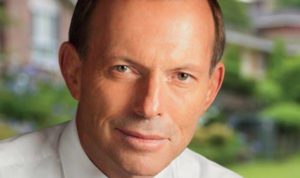Towards a More Direct Democracy
Evaluating the Nature of Our Democracy
The outcome and events leading up to the Australian federal election have led me to stop and ponder not only on the political questions, but also on the underlying institutional and procedural causes. The ongoing and escalating conflict between the United States President and Congress also provides a context in which to consider potential reforms. In essence, I believe it’s time to evaluate the nature of our democracy.
When choosing the form of government for the Commonwealth of Australia, colonial politicians considered the structures of government adopted by respected western democracies.

‘We the people’ is a phrase synonymous with the ultimate source of power in the United States. Until relatively recently, the final authority and source of power in Australia was less clear.
There are several reasons for this. Our Constitution is to be found in a section of a 1900 Act passed at Westminster by the House of Commons and the House of Lords. As a Constitutional Monarchy, the Crown retained the right to disallow legislation passed by the Australian Parliament. The British also insisted that the final court of appeal for certain Australian judicial matters, be the Privy Council, rather than the Australian High Court.
However after these vestiges of our colonial past were gradually removed – some as recently as 1986 – our High Court has found that the source of constitutional power (the rules that ultimately govern our nation) is the Australian people. In addition some have argued that it is important to note that our Constitution was approved by the people as evidenced (though seemingly, in passing) by the wording of the Constitution’s preamble. Further it is suggested that this is also clear from the fact that any changes to the Constitution must be approved by the people. And, even though only Parliament has the power to make laws, final legal authority lies with the Constitution as interpreted by the High Court.
Distinguishing Direct and Indirect Democracy
In our form of democracy, the will of the people is confined by the Constitution and by the power of those whom we elect as our representatives in Parliament. As Australians seldom make national decisions themselves, and instead vote for representatives to do so, Australia may be described as a representative or indirect democracy. The people of Switzerland, on the other hand vote directly on issues rather than merely on the election of representatives. Such a direct form of democracy ensures that the views of the majority are reflected in laws. It is, however, less effective in protecting the rights of unpopular minorities.
What We Could Borrow From Swiss Direct Democracy

A Swiss outdoor parliament rejects naked hiking.
Our adoption of one aspect of the Swiss model of democracy, I believe, would go at least some way towards ensuring that the laws passed by Parliament ad well as the initiation of Constitutional Change are not left entirely in the hands of federal politicians, and better reflect the will of the people.
Amending the Constitution
I turn firstly to the amendment of our Constitution. Currently, any Constitutional change must be initiated by Parliament. Only then, can it be put to the people in a Referendum. This form of referendum is sometimes described as a passive referendum. This is because the people do not initiate or choose to vote on the question nominated by Parliament. There are a number of problems with the current arrangement.
Flaws in the Current Constitutional Amendment Process
In theory, a referendum proposal can be initiated by both or either House of Parliament. But in practice, a referendum cannot be initiated by the Senate. This is due to the convention that the Governor-General only acts on the advice of the Government. By definition the Government, commands the majority of the House of Representatives. Consequently, if the Government does not support the referendum, the House of Representatives will reject the proposal, and the Prime Minister is highly unlikely to advise the Governor-General to call a referendum just because the Senate would like one held. The significance of this is that in practice it is the Government and not Parliament that decides whether a referendum is held.
Two Means of Involving Citizens in the Initiation of Referenda.
Drawing on procedures in Switzerland and the United States I propose that we give serious thought to at least two means of involving the people in the initiation of referenda.
Citizen Initiated referenda
Citizen initiated referenda are utilised in several countries. Such a process means that if a certain number of people petition for a referendum question to be put to the people, the government must do so. Irrespective of the government’s wishes. The advantage of such a proposal is that where for personal, political or other reason unrelated to the views of the people, parliamentarians resist pressure to initiate certain constitutional amendments, the people could do so by demonstrating significant public interest in having the question put to the people in a referendum.
Concerns could be expressed at the prospect of populist, discriminatory or otherwise undesirable constitutional change. I consider this an overstated fear.

Direct democracy denied Swiss women the right to vote until 1971.
Referenda questions have been shown to be notoriously difficult to pass – as the 8 successes out of 42 proposed Australian constitutional amendments attest. This low success rate could also be said to suggests that Parliamentarians are poor judges of public support for constitutional amendments. In any event, remaining concerns could be addressed by permitting a two-thirds majority vote by both Houses of Parliament to veto the initiation of such a constitutional amendment referenda. The special majority requirement would ensure that the reasons for the veto would not be for partisan political reasons.
Though not bolstering direct democracy, I would also urge that by borrowing from the United States, constitutional change could also be initiated by State parliaments. That a majority of State parliaments vote for a referendum, would appear to be a good reason for holding a referendum for all Australians. One of the requirements for a successful referendum is that a majority of people in a majority of States support the proposed amendment. Consequently, a referendum initiated by Parliaments representing the people of a majority of Australian States would appear to have adequate interest in initiating a nation wide referenda.
Direct Initiation of Legislation
The arguments for direct democracy in constitutional change may have more merit and less opposition when applied to legislation. If able to be initiated by the people, marriage equality would have been put to the people and required parliament to legislate, rather than just provide an opinion poll .
An even more stark illustration is provided by the legalisation of Euthanasia. The law has been supported for some time by over three-quarters of the population, but resisted by parliamentarians. If able to be initiated by the people, the legalisation proposal would receive the support of the majority of voters. To address parliament’s possible ongoing reluctance to legislate, a constitutional amendment compel parliament to legislate within a stipulated period, or, failing which, be required to call a general election.

Conservative representative of socially liberal electors
Many would suggest that voters can already express their views on an issue by not voting for a candidate who is not prepared to represent their views in Parliament. This view, while initially attractive, is fatally flawed. Outside of referenda, when voting for a parliamentary representative we do not vote on the basis of one issue. Electors in Tony Abbott’s seat were clearly more socially progressive than their representative. Their vote for Tony Abbott was clearly not a vote of approval for Tony Abbott’s conservative attitudes. There were undoubtedly many other reasons for why they voted for him for 25 years.
Resolution of Disputes Between the Houses
A specific legislative area for employment of direct democracy is in the resolution of disputes between the two Houses of Parliament. The current procedure relies on joint sittings and double dissolutions. Australia’s track record reveals that this approach very rarely leads to an actual resolution. The people’s involvement in double dissolution elections does little, if anything, for the legislation at the centre of the dispute, which tends to be swamped by the many other issues on which candidates will contest the election. This would not be the case if failure to resolve a dispute over legislation led to a referendum on the legislation, rather than to a double dissolution election.
People Reforming Our Unparliamentary Parliament
The events of the past few years leave us in no doubt that the people and parliamentarians do not see eye to eye on how parliamentarians should carry out their duties.

Julia Banks MHR quit in protest at bullying
The recent, bullying and intimidation allegations levelled by female members of parliament against some of their male colleagues, disclose an urgent need for change.
As long as we retain the adversarial parliamentary procedures, adopted from the Westminster system, we are almost certain to retain a parliament made up of parliamentarians more concerned with point scoring and power, than with legislating in the nation’s best interests.
Parliamentary procedures are unlikely to be reformed as long as those who revel in this atmosphere make up the majority and are in charge. Only direct democracy can rectify this unseemly mess. A citizen initiated referenda facilitating constitutional amendment and legislation could for example amend the constitution by taking away parliament’s regulation of its own powers and processes in. Order to make it subject to workplace laws.
While all this may seem pie-in-the-sky, it is in practice quite achievable. We need to start a discussion of whether, and if so, where there is a need for an increase the level of direct democracy.
We simply can’t rely on the parliamentary representatives in this indirect democracy